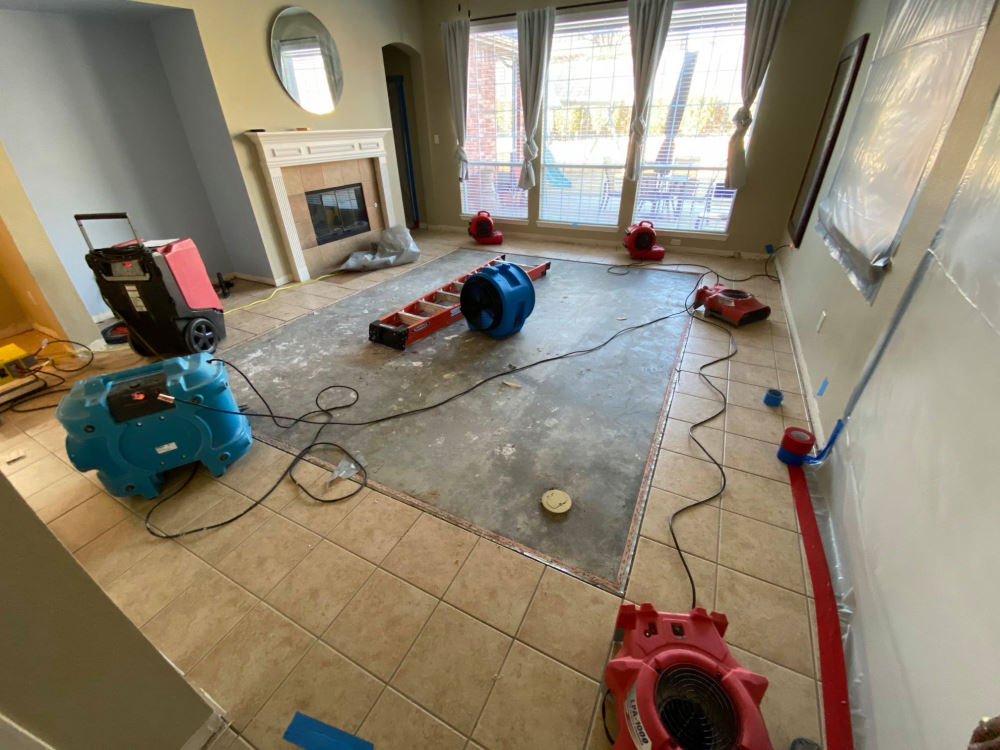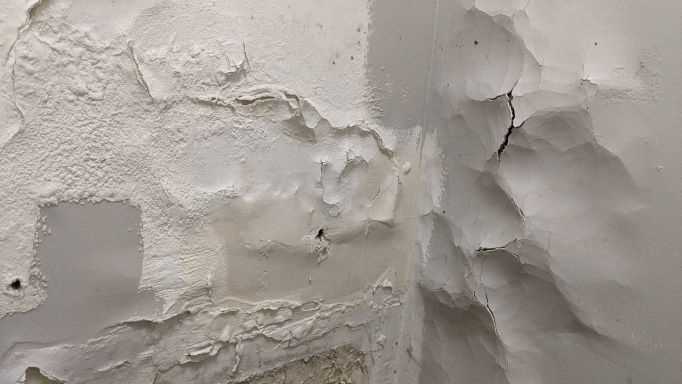Leading Water Mitigation Company Offering Fast and Efficient Solutions
Leading Water Mitigation Company Offering Fast and Efficient Solutions
Blog Article
The Refine of Water Damages Cleanup: Guaranteeing Your Home Is Brought Back Successfully
Water damages can be a difficult difficulty for property owners, demanding a structured and precise cleaning process to recover security and capability. A thorough analysis is essential to recognize the level of the damages and figure out the appropriate removal procedures. Following this, efficient water removal strategies play a critical role in reducing further harm. Nevertheless, the subtleties of drying, sterilizing, and ultimate restoration are similarly important and usually ignored. Recognizing these phases can make a substantial difference in the result of your home's repair, motivating a closer look at what each action entails.
Assessing the Damage
Upon finding water damage, the primary step is to completely examine the degree of the influence. This preliminary examination is important, as it aids establish the needed actions for effective cleanup and repair. Begin by evaluating the affected areas, consisting of wall surfaces, ceilings, floors, and personal belongings, to recognize the resource of the water intrusion, whether from flooding, leaks, or condensation.
Documenting the damages is vital for both insurance policy cases and intending repair initiatives - damage restoration services. Use pictures and composed notes to capture the severity of the damages, noting any affected structural elements and products. Pay special interest to locations that might not be immediately visible, such as behind walls and under carpetings, as hidden wetness can result in more issues, including mold development
In addition, assess the timeline of the water direct exposure. Inevitably, an extensive evaluation lays the groundwork for a successful water damages cleaning procedure, guaranteeing that all affected areas are dealt with properly and extensively.
Water Removal Techniques

Professionals normally employ completely submersible pumps for larger quantities of water, which can swiftly reduce flooding in basements or other affected locations. For smaller quantities, wet/dry vacuum cleaners are typically used to remove recurring wetness from rugs and tough surface areas. Additionally, using portable extractors enables targeted elimination in confined areas or locations with fragile materials.
In instances of infected water, such as sewage or floodwater, advanced removal strategies may entail making use of biohazard equipment to ensure security and conformity with health and wellness policies. High-powered extraction devices are important in decreasing water retention in structural products, which can bring about mold and mildew development and architectural deterioration if not addressed without delay.
Ultimately, the performance of water extraction methods plays an essential duty in the overall success of the water damage clean-up process, laying the foundation for succeeding restoration efforts.
Drying and Dehumidification
When standing water has been effectively drawn out, the following important phase in the water damage clean-up process is drying and dehumidification. This action is necessary to stop additional damages and mold development, which can occur within 24 to 2 days in moist atmospheres.
To accomplish reliable drying out, specialized equipment such as industrial-grade air movers and dehumidifiers is utilized. Air moving companies distribute air throughout damp surface areas, improving evaporation prices, while dehumidifiers decrease humidity degrees in the air, promoting a helpful environment for drying. The combination of these devices makes certain that wetness is extracted from home furnishings, walls, and floorings, permitting them to completely dry extensively.
It is necessary to keep an eye on the drying process closely. Professionals commonly make use of dampness meters to analyze the moisture material in different materials, making sure that all affected locations reach appropriate dry skin degrees. This thorough method assists to stop surprise moisture pockets that can lead to architectural damages or harmful mold development.

Cleansing and Sterilizing
After the drying out and dehumidification stage is full, the next vital step in water damages clean-up is cleaning up and sanitizing the affected areas. This procedure is essential to avoid the growth of mold and mildew, bacteria, and various other virus that grow in damp settings.
The cleaning stage generally entails getting rid of any type of debris, dust, and contaminants from surface areas making use of specialized cleaning up agents. For difficult surface areas, a mix of soap and water or business cleaning products is typically utilized. Soft products, such as upholstery and rugs, may need extra substantial cleaning techniques, cabinet water damage consisting of vapor cleaning or deep extraction methods, to make certain complete hygiene.

Disinfecting complies with cleaning, making use of EPA-approved anti-bacterials to remove hazardous bacteria. This step is necessary, particularly in areas that might have entered into call with floodwaters or sewer, as these sources can posture major wellness dangers.
Furthermore, it is necessary to resolve any continuing to be odors, which may call for using smell neutralizers or sophisticated methods like ozone treatment. Proper cleaning and sterilizing not just restore the safety and security and hygiene of your home yet additionally prepared for effective reconstruction and repair services in subsequent stages of the water damages clean-up process.
Repair and Fixings

As soon as the assessment is full, remediation initiatives can begin. Additionally, flooring may need similar focus, depending on the degree of water exposure.
It is essential to engage skilled repair professionals during this process, as they possess the proficiency to deal with complicated fixings effectively. They can help minimize possible future concerns, such as mold and mildew development or structural instability, thus ensuring a habitable and risk-free living setting. Eventually, efficient reconstruction and fixings bring back the home's honesty and boost its general value.
Final Thought
In verdict, the process of water damage cleaning is crucial for recovering a home to its pre-damage problem. Each phase, from assessing the damages to implementing effective water extraction strategies, adhered to by comprehensive drying, sterilizing, and necessary repairs, plays an essential role in making sure security and compliance with structure standards. Efficient implementation of these steps not just alleviates immediate damages but additionally improves the lasting honesty and worth of the home.
Water damage can be a challenging difficulty for home owners, necessitating a meticulous and structured cleaning process to restore security and functionality. Inevitably, a comprehensive analysis lays the groundwork for a successful water damages cleanup procedure, ensuring that all influenced locations are resolved successfully and completely.
Efficient water removal techniques are crucial in alleviating damage and preventing more problems following a water breach event.In final thought, the process of water damage cleaning is vital for flood water extraction bring back a home to its pre-damage problem. Each stage, from analyzing the damages to implementing reliable water extraction techniques, adhered to by extensive drying, disinfecting, and required repair services, plays a crucial role in making sure safety and security and conformity with structure standards.
Report this page